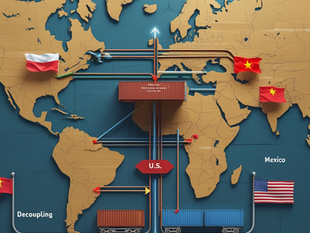
How Tariffs on Chinese Products Affect Small E-Commerce Stores
0
0
0
The rise of online shopping has created an explosion of small e-commerce businesses, many of which rely on importing goods from China. However, escalating tariffs on Chinese products have disrupted this business model, driving up costs and complicating supply chains. As these duties expand, small online retailers are asking: can we survive in a world of rising import fees?
Table of Contents
1. Why Small E-Commerce Stores Depend on China
3. The Immediate Financial Impact
4. Inventory and Supply Chain Challenges
6. Can Customers Absorb the Price Hikes?
7. How to Stay Competitive in a Tariff-Driven Market
1. Why Small E-Commerce Stores Depend on Chinese Products

For years, Chinese manufacturers have been the go-to for small e-commerce entrepreneurs.
Low manufacturing costs
Massive variety and availability through platforms like Alibaba and AliExpress
Easy access to dropshipping models
Ability to source niche and trending products quickly
For these reasons, tariffs disrupt not just the margins—but the entire supply chain logic.
2. What Tariffs Are in Place?
As part of the ongoing U.S.-China trade war, the U.S. has imposed tariffs on hundreds of billions worth of Chinese goods, many of which include:
Consumer electronics
Apparel and accessories
Kitchenware, toys, and gadgets
Raw materials like plastics and metals
These tariffs range from 7.5% to 25% depending on the product classification, and they apply even if you're just a small business importing a few units.
3. The Immediate Financial Impact
For small e-commerce stores, even a small tariff can have outsized effects.
A 25% tariff on a $20 product erases slim profit margins
Many stores are forced to raise prices or cut advertising
Higher tariffs = more money tied up in inventory
Unlike large retailers, smaller players don’t have negotiating power or economies of scale to soften the blow.
4. Inventory and Supply Chain Challenges
Tariffs also impact inventory management:
Many stores now order in bulk ahead of tariff hikes—risky if the product doesn't sell
Shipping delays and customs inspections increase due to more complex import rules
Businesses must keep track of HTS codes and compliance documentation—an added burden for solo entrepreneurs
This means fewer product launches, slower restocks, and a more fragile backend.
5. Shifting to New Suppliers
Some store owners are trying to pivot away from China, but it's not always easy:
Sourcing from India, Vietnam, or Turkey often means longer lead times or higher minimum order quantities
U.S.-based suppliers tend to be more expensive, and often lack variety
Developing a new supplier relationship takes time and trust
Still, the trend is clear: many sellers are diversifying to reduce tariff exposure.
6. Can Customers Absorb the Price Hikes?
Online consumers are notoriously price-sensitive:
In competitive markets like home gadgets or beauty products, a $2 price increase can kill conversion
High-ticket niche items may have more wiggle room
Customer trust and loyalty matter more than ever, so branding becomes key to justify price increases
Small businesses are now leaning into storytelling, value-added services, and U.S.-based shipping to retain customers.
7. How to Stay Competitive in a Tariff-Driven Market
Small e-commerce stores can fight back by:
Using fulfillment centers in tariff-free countries
Building bundles to boost average order value
Launching private label brands with higher margins
Using print-on-demand or local dropshipping models to avoid bulk imports
Staying informed through resources like the USTR website and trade advisors
Tariffs aren't going away soon—adapting to them is the new normal.
Running a small store? Don’t let rising duties stop your growth. Learn how to adapt to 👉 tariffs on Chinese products












